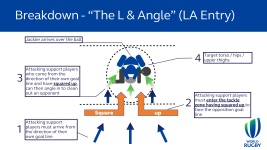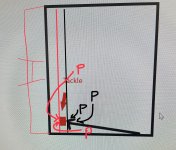Hello guys. Apologies for my basic question I’m just trying to get a better understanding of the rules of the game which can be very complicated at first!
My question is two fold.
When a player has been tackled why do players form a caterpillar of players over the ball without a ruck being formed, gradually passing the ball to the back player. What is the tactical advantage of subsequent players binding to the person in front.
My second question is if the ball has made it back to the third person in this caterpillar(for example), what stops and opponent from lunging forward and taking possession of this ball from the feet of this player(lunger stays on feet).
In the circumstances described a ruck would not have formed(as the opposing players are not bound), the player challenging for possession would have came from the direction of their own goal. The only thing I can think is that they would then be offside as they would no longer be the hindmost player(from the direction of their their end of the field) as the front most player of the opposition (caterpillar) would then become the offside line which the player attempting to handle the ball has now passed.
But if this is the case, what stops anybody in the tackle area from being offside. As subsequent players bind surely all players in front of the rearmost players are now ahead of the offside line but playing the ball.
I hope this makes slight sense.
Thanks!
My question is two fold.
When a player has been tackled why do players form a caterpillar of players over the ball without a ruck being formed, gradually passing the ball to the back player. What is the tactical advantage of subsequent players binding to the person in front.
My second question is if the ball has made it back to the third person in this caterpillar(for example), what stops and opponent from lunging forward and taking possession of this ball from the feet of this player(lunger stays on feet).
In the circumstances described a ruck would not have formed(as the opposing players are not bound), the player challenging for possession would have came from the direction of their own goal. The only thing I can think is that they would then be offside as they would no longer be the hindmost player(from the direction of their their end of the field) as the front most player of the opposition (caterpillar) would then become the offside line which the player attempting to handle the ball has now passed.
But if this is the case, what stops anybody in the tackle area from being offside. As subsequent players bind surely all players in front of the rearmost players are now ahead of the offside line but playing the ball.
I hope this makes slight sense.
Thanks!





